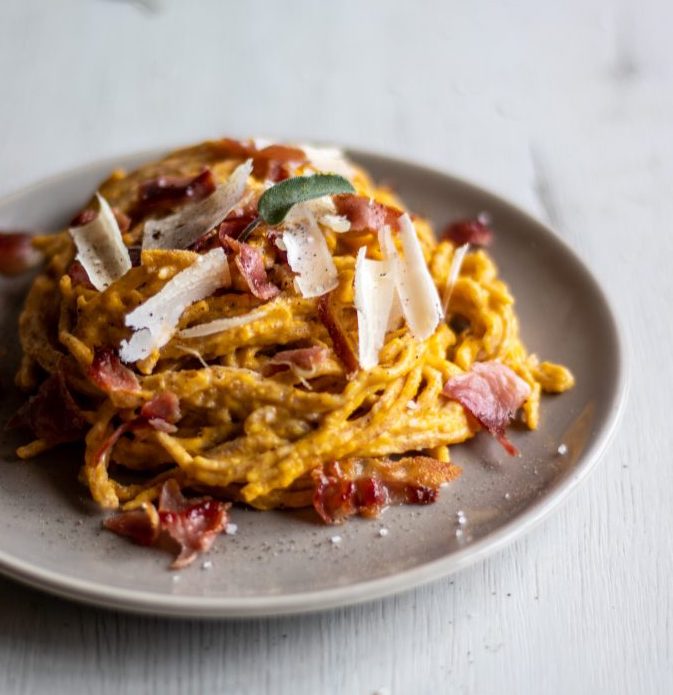This article was updated on January 4th, 2021
Celebrate National Spaghetti Day with this delicious recipe from Jennifer Miller!
From the mouth of Jennifer Miller:
The go-to food in my home, like many others I assume, is a plateful of spaghetti. I usually pair it with a rich homemade meat and tomato sauce like an Italian Bolognese and it’s the ultimate comfort food. Unfortunately, I am usually pretty lax about making my spaghetti from scratch, though goodness knows why when it’s so easy and it completely takes the dish to a completely different level!
When I do get the chance to whip up a batch of fresh pasta, I love to make it as healthy as possible with the fiber included in whole wheat flour. In the store bought kind, it can really toughen up spaghetti and requires a few extra minutes of cooking to make it tender. With homemade pasta, it’s soft and easy to cook, though a little less smooth compared to the soft 00 flour that is used in most recipes. It also has a slightly nutty flavor that you don’t get from the more processed flours.
For the sauce, I like to go with a seasonal sauce. They say long pasta should be paired with vegetable or oily sauces, and what vegetable is more autumn-like than pumpkin? Not just a blended raw pumpkin sauce, but one that’s been roasted first to develop the sweet taste in the flesh and then cooked down a bit more with garlic and onion to make the sweet become savory. Add a bit of milk and blend it all, in the end, to make a creamy sauce for the fresh strands of spaghetti to soak up.
I could have stopped there with this pasta, but little salty crisp crumbles of presunto just needed to be added on top. Presunto is the Portuguese equivalent to Spain’s Jamón or Italy’s prosciutto. It’s a dry-cured ham that, when just sliced, can melt in your mouth. Crisp it up and it’s better than bacon, and I even like to think of it as classy bacon!
As any good pasta, the last bit must include a pinch, mound, or hills worth of shaved parmesan cheese!
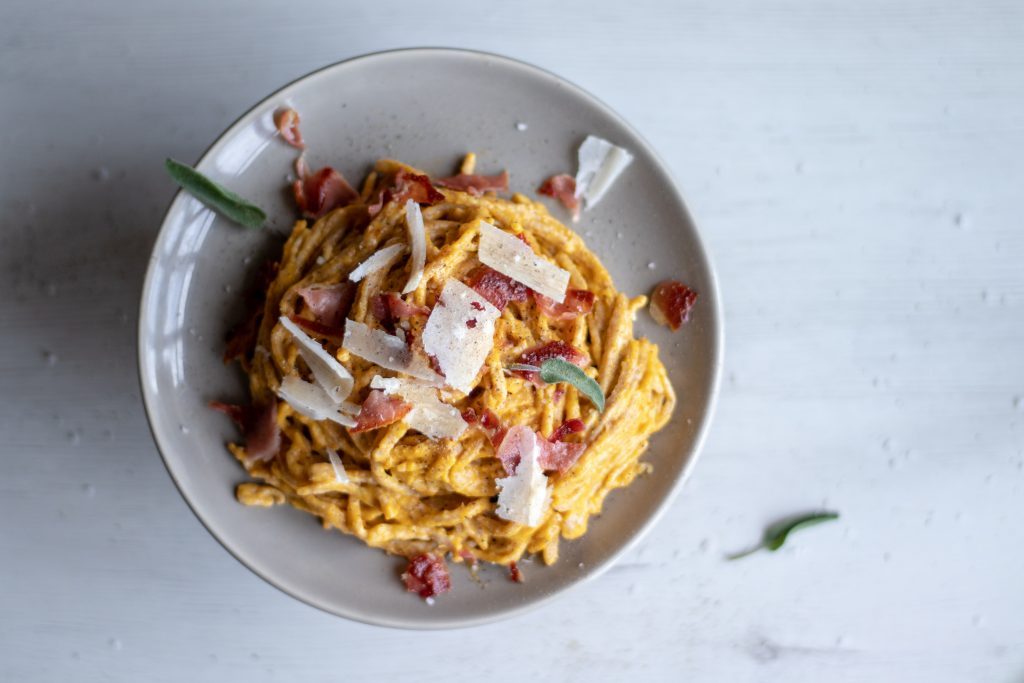
Course Main Course
Cuisine Italian
Prep Time 35 minutes
Cook Time 35 minutes
Total Time 1 hour 10 minutes
Ingredients
Pumpkin Sauce
- 1 Japanese pumpkin
- Coarse salt
- 1 medium onion
- 4 garlic cloves
- ½ teaspoon coarse salt
- 2 cups milk
- 2 tablespoons olive oil
- 4 slices of Presunto
- Parmesan cheese
- Salt and black pepper to taste
Whole Wheat Spaghetti
- 1½ cup whole wheat flour plus some for dusting
- ½ teaspoon salt
- 4-5 fresh sage leaves
- 2 eggs
- 1 tablespoon olive oil
Instructions
- Preheat the oven to 400F.
- On a cutting board, cut the pumpkin in half and scoop out the seeds and stringy insides, discarding the insides and seeds. Put the pumpkin, cut side up, inside an oven safe dish and sprinkle with coarse salt.
- Put the pumpkin in the oven and allow it to roast 30-40 minutes or until a fork can easily slide into the flesh. Prepare the fresh spaghetti while the pumpkin cooks.
- Rinse the sage leaves under cool water and them dry before laying them on a cutting board and mincing finely.
- Mix the flour, salt, and minced sage in a bowl with a fork before making a well in the center to crack the eggs into. Add the olive oil and start to stir the flour, pulling the flour into the center while stirring, until the mixture becomes clumpy.
- Dust a clean flat surface with flour and turn the dough out onto it. Knead the dough, working the dusted flour into the dough to form a smooth ball that doesn’t stick to the surface, about 10 minutes. Wrap the dough in plastic wrap and let it rest about 15 minutes.
- Cut the dough into two pieces. Dust the full sheet setting of a pasta maker with flour and run the dough through 3-4 times on the pasta sheet maker, folding it in half between each run through.
- When the pasta is a smooth sheet and doesn’t separate when run through the machine, attach the spaghetti setting and dust it with flour. Put the dough through the spaghetti attachment to make spaghetti noodles, careful to assist it as it comes through by pulling it out straight so it does not clump together. Repeat with the other half.
- Bring a pot of water to a boil on the stove over high heat. Drop the spaghetti into it to cook about 3-4 minutes, or when it rises to the top. Drain the spaghetti in the sink through a colander.
- Remove the pumpkin from the oven and allow it to cool about 5-10 minutes. Using a fork, scrape the orange flesh from the skin and discard the skin. Roughly chop the onion and smash the garlic cloves on a cutting board.
- Heat the olive oil in a large sauté pan over medium-high heat. Add the onion and garlic to the pan and cook about 3 minutes, or until they are just starting to turn brown. Add the pumpkin to the pan and stir to combine and cook 5-7 minutes; the pumpkin should be starting to cook down into a paste like consistency. Pour the milk into the pan a little bit at a time, stirring constantly. Allow it come to a simmer, reduce the heat to medium-low and let it cook about 15 minutes, stirring occasionally to prevent it from sticking.
- Turn off the heat and pour the sauce into a vessel to blend to it into a smooth, thick liquid. Pour it back into the sauté pan.
- Add the cooked spaghetti to the pan and toss it with the sauce to coat all of the noodles. Cover and set aside. Season it with salt and black pepper to taste.
- Heat another large pan on the stove over medium heat. Lay the presunto on the bottom of the pan and let it cook 3-4 minutes or until browned and crisp. Remove the presunto from the pan and put it on paper towels to drain of excess fat.
- Plate the spaghetti and crumble the presunto on top and finish with shaved parmesan cheese on top.
Notes
While Japanese pumpkin is the perfect size for this, feel free to use a quarter of a large pumpkin.
If presunto is unavailable, use prosciutto, jamón, or, even though the texture will be different, thinly sliced bacon.
STEP ONE – PREPARE THE PUMPKIN
Place the pumpkin on a cutting board and cut it in half with a sharp chef’s knife.
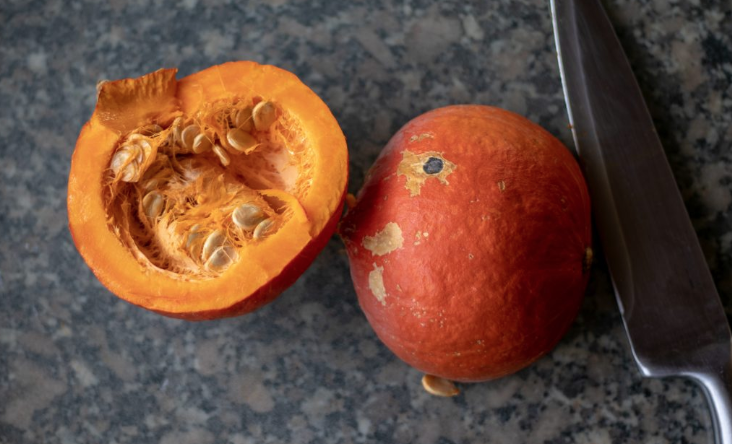
With a spoon, scrape out the seeds and stringy bits and discard or save the seeds for another use.
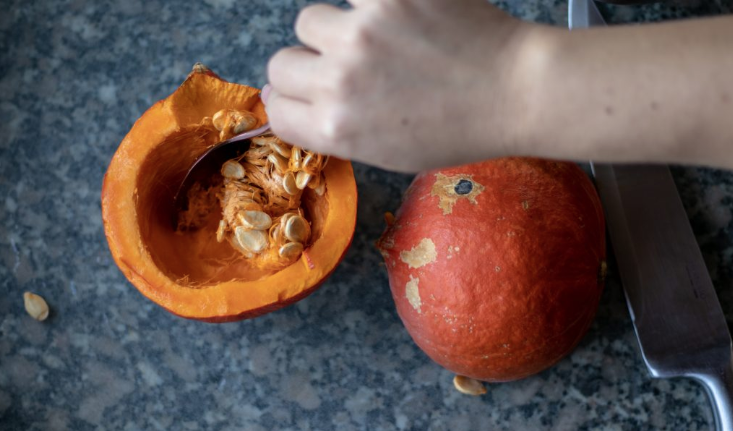
Put the pumpkin in a heat safe dish and sprinkle it with salt.
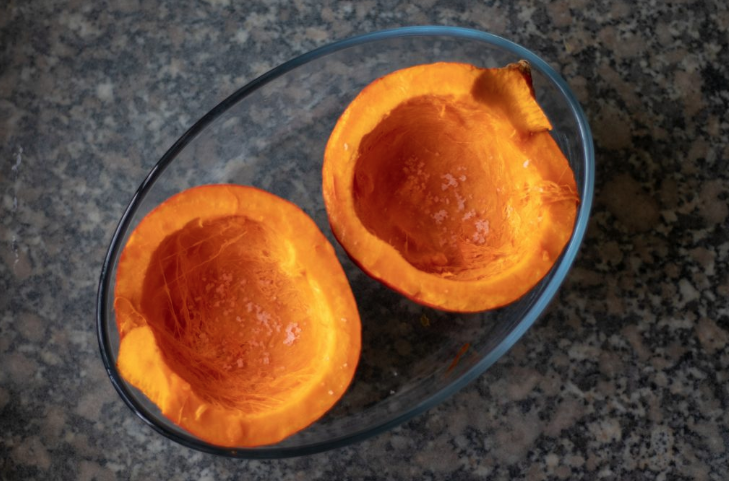
STEP TWO – ROAST THE PUMPKIN
Put the pumpkin in an oven preheated to 400F and allow it to roast 30-40 minutes. It’s done when a fork inserted into the flesh goes through easily and the liquid from the squash has puddled a little in the middle.
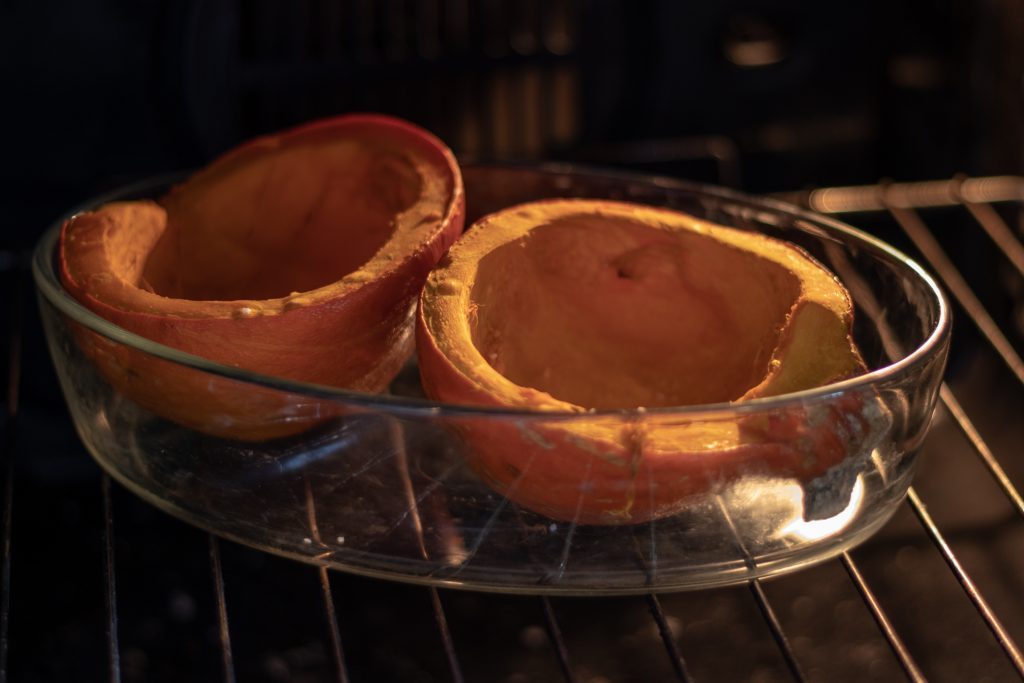
STEP THREE – PREPARE THE SAGE
Wash the sage and pat it dry with paper towels to remove any excess moisture. Finely mince the sage on a cutting board with a chef’s knife or a mezzaluna.

STEP FOUR – MIX THE PASTA DOUGH
Put the flour, salt, and sage into a bowl.
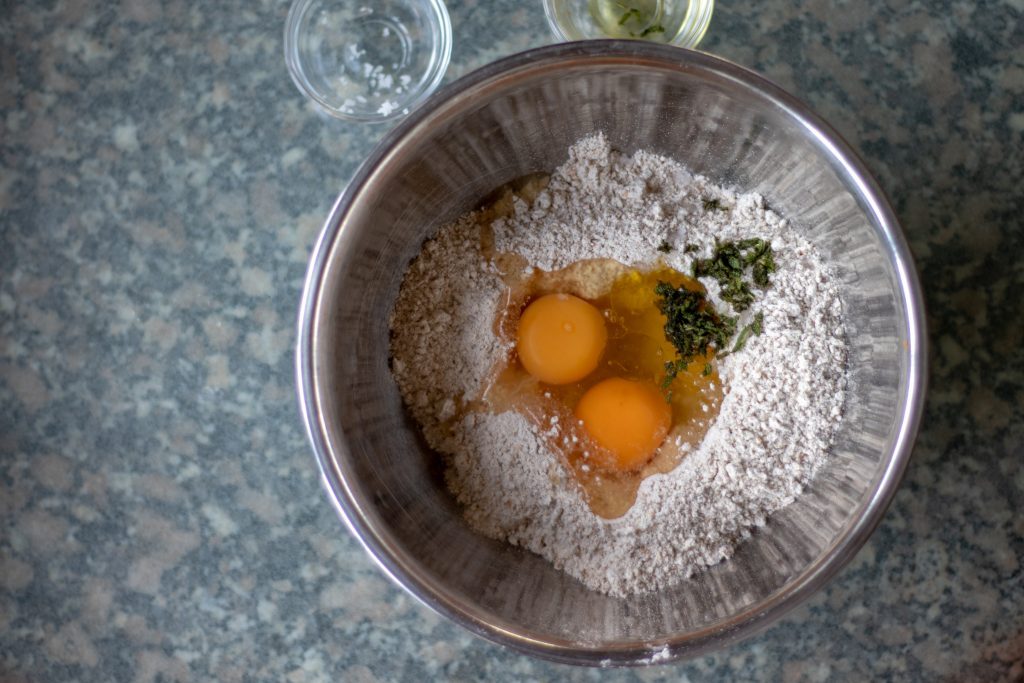
Form a well in the center and crack the eggs into it, careful to not allow any shell, and add the olive oil.
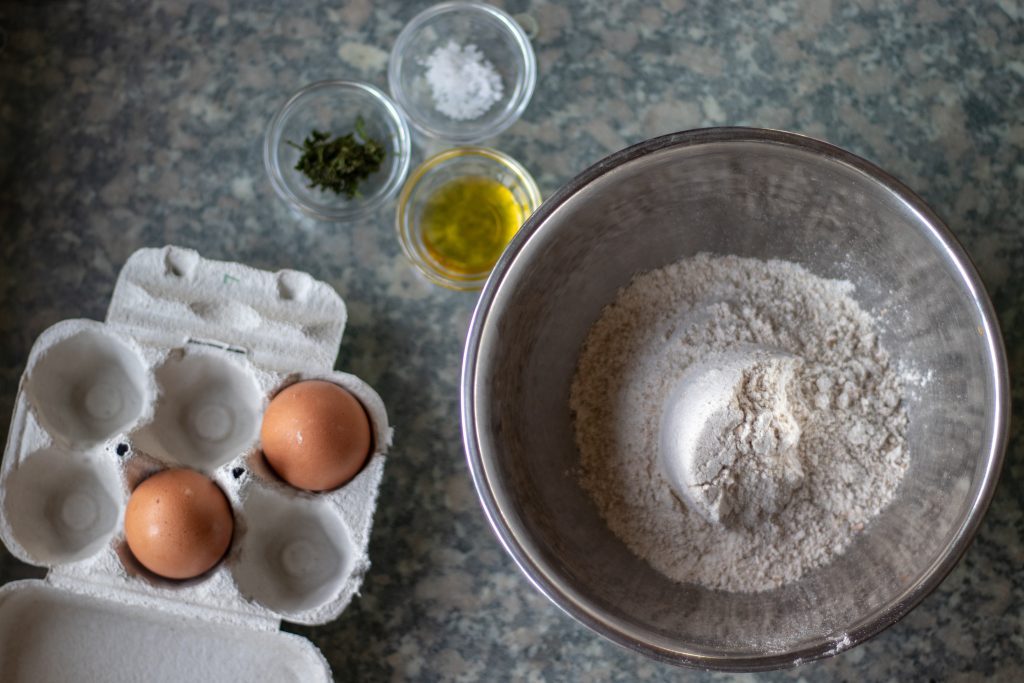
With a fork, slowly start stirring, pulling the flour into the eggs and olive oil in the center. Continue to stir until it forms a clumpy dough.
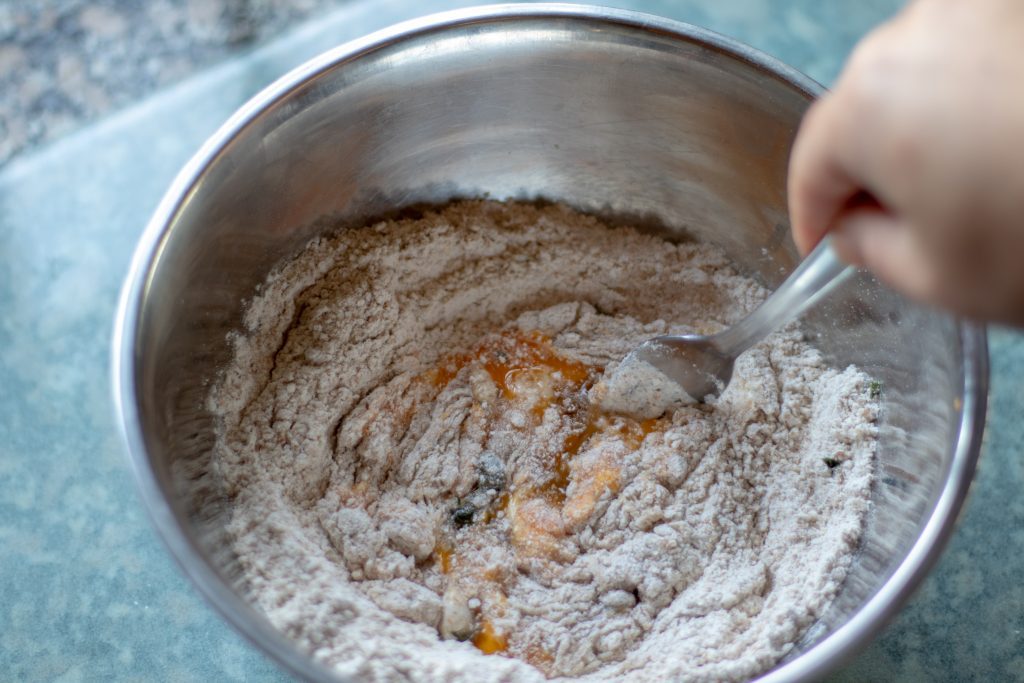
STEP FIVE – KNEAD THE DOUGH
Sprinkle flour on a flat surface and turn the dough out onto it.
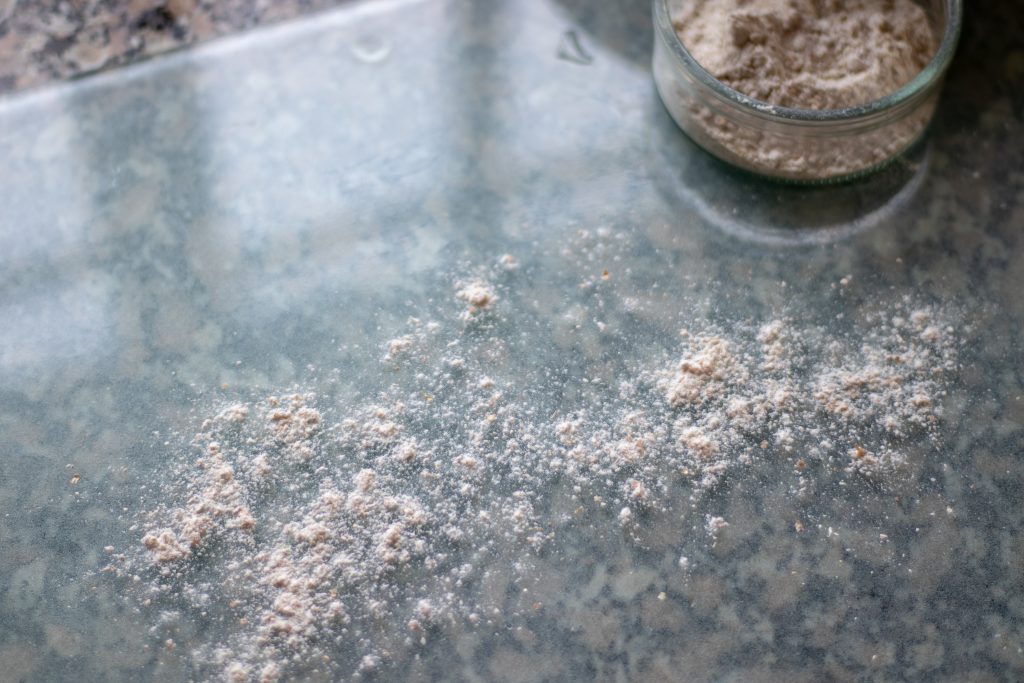
Using both hands, knead the dough by pushing it forward with the heel of the hand and pulling back with the fingers in a rocking motion. This will push the clumps together and pull up any extra flour while it becomes a smooth, firm ball.
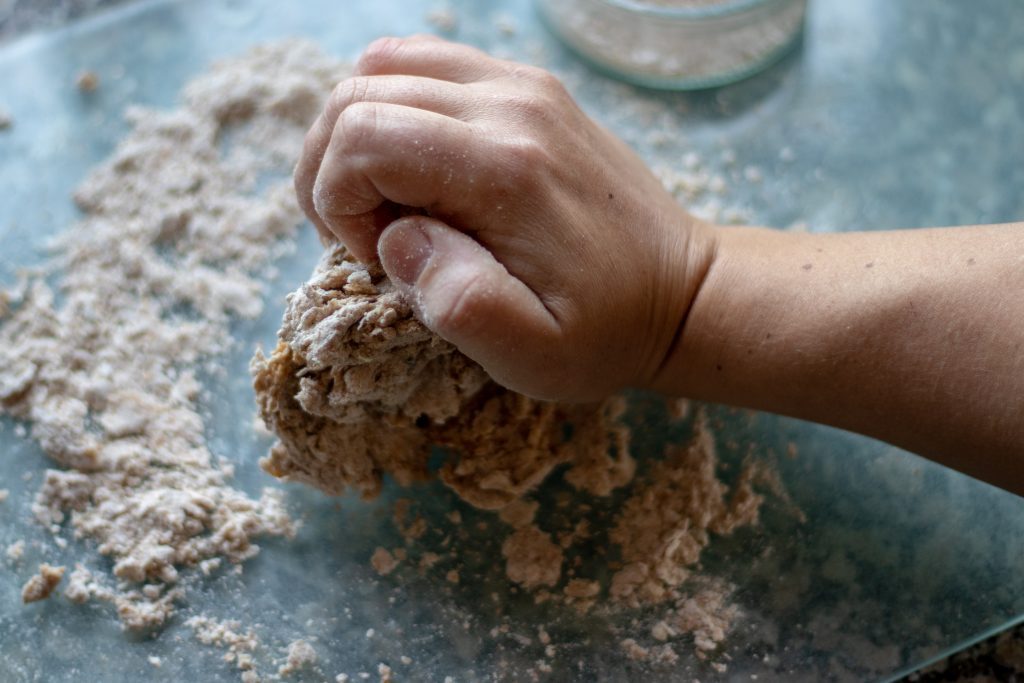
Wrap the dough with plastic wrap and let it rest 15 minutes. If your kitchen is warm, or need to wait longer, put the dough in the refrigerator to rest.
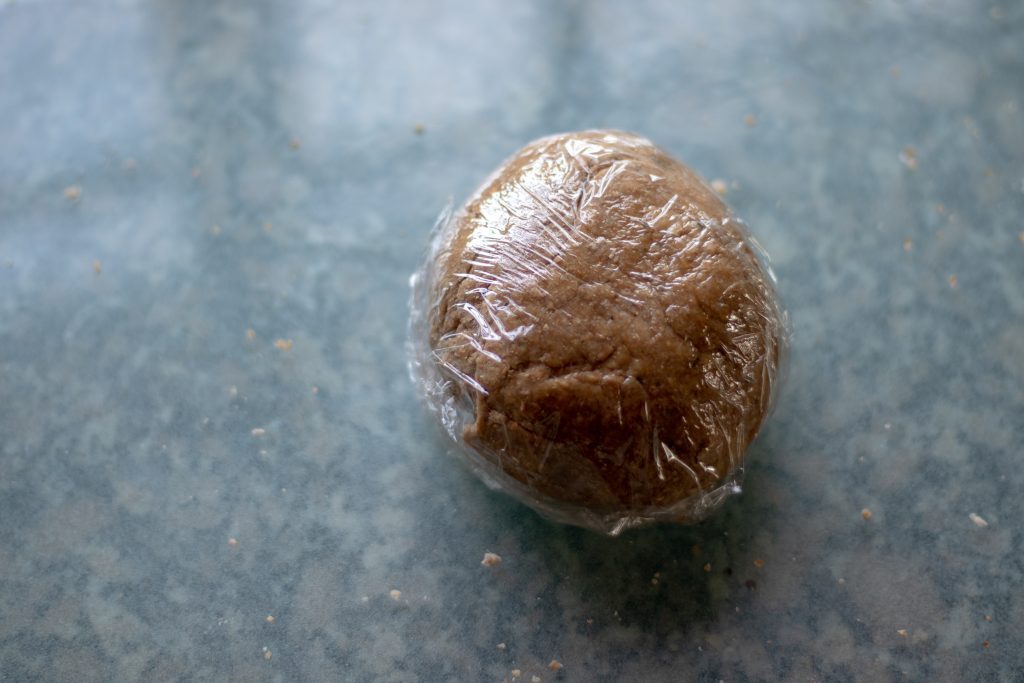
STEP SIX – MAKE THE SPAGHETTI
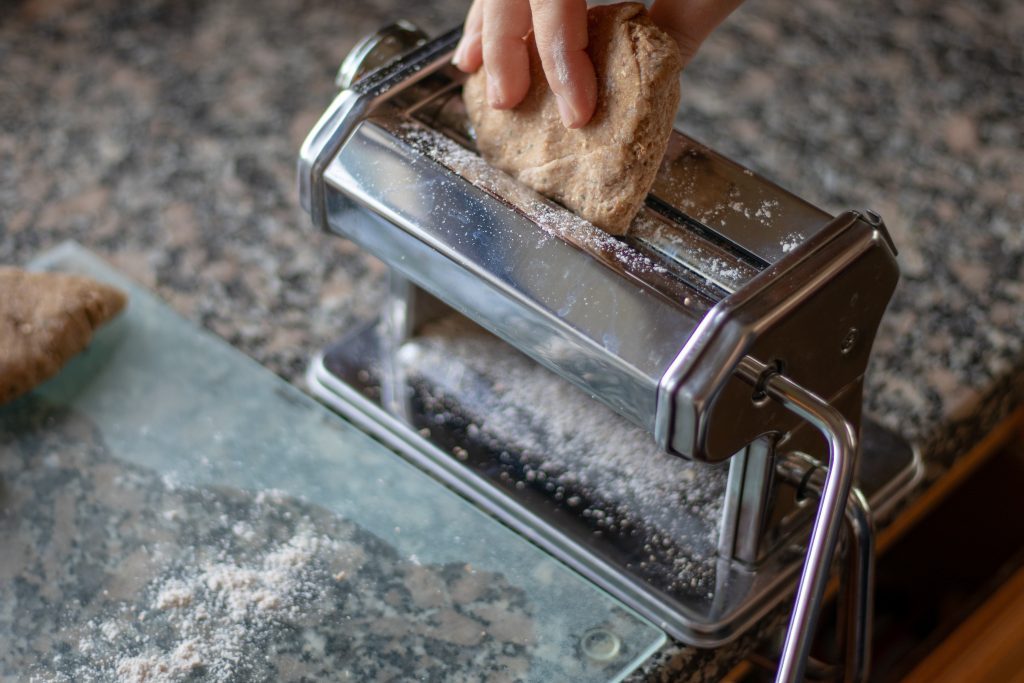
Once the dough has had time to rest, unwrap it and cut it into two pieces. Sprinkle flour on the pasta sheet roller of a pasta machine.
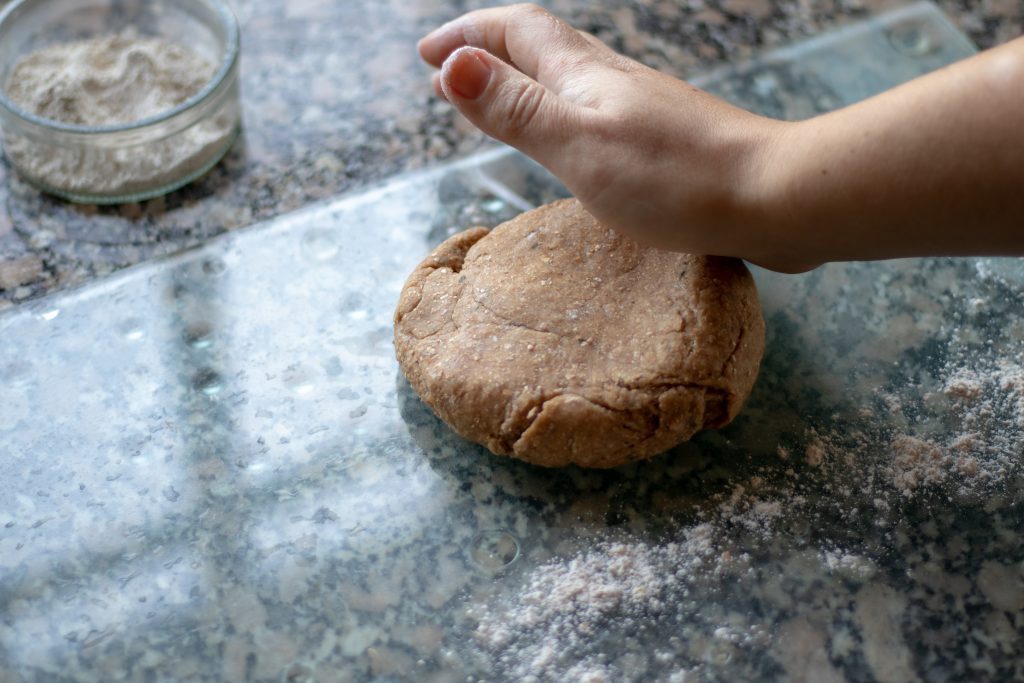
Run the dough through at least 3 times, folding in half each time before running it through again.
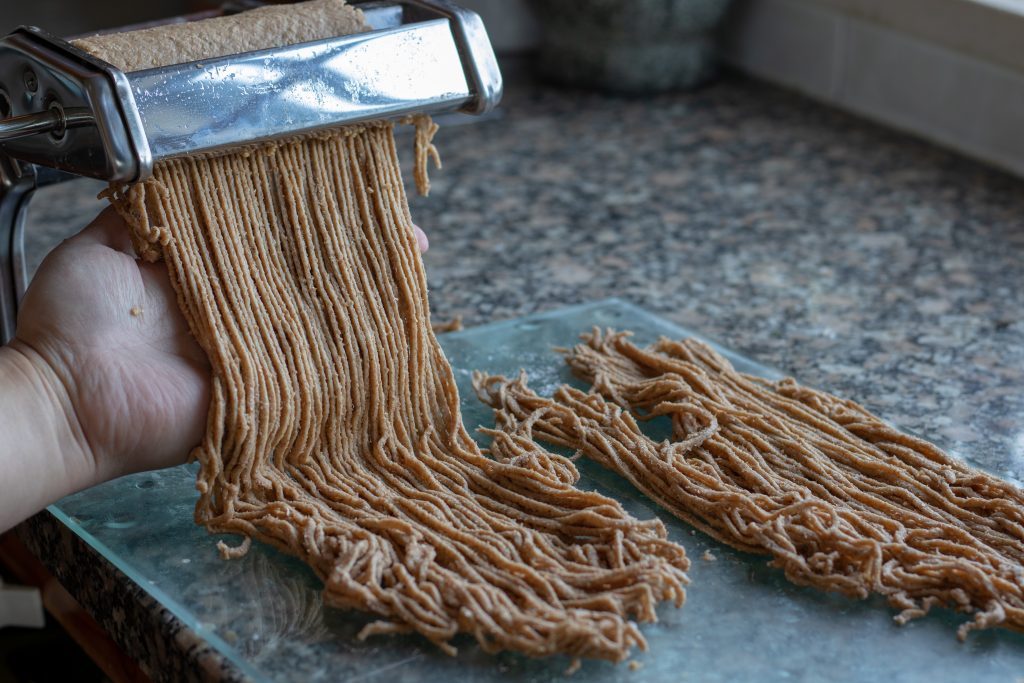
This allows the pasta to come together, smooth out and not tear.
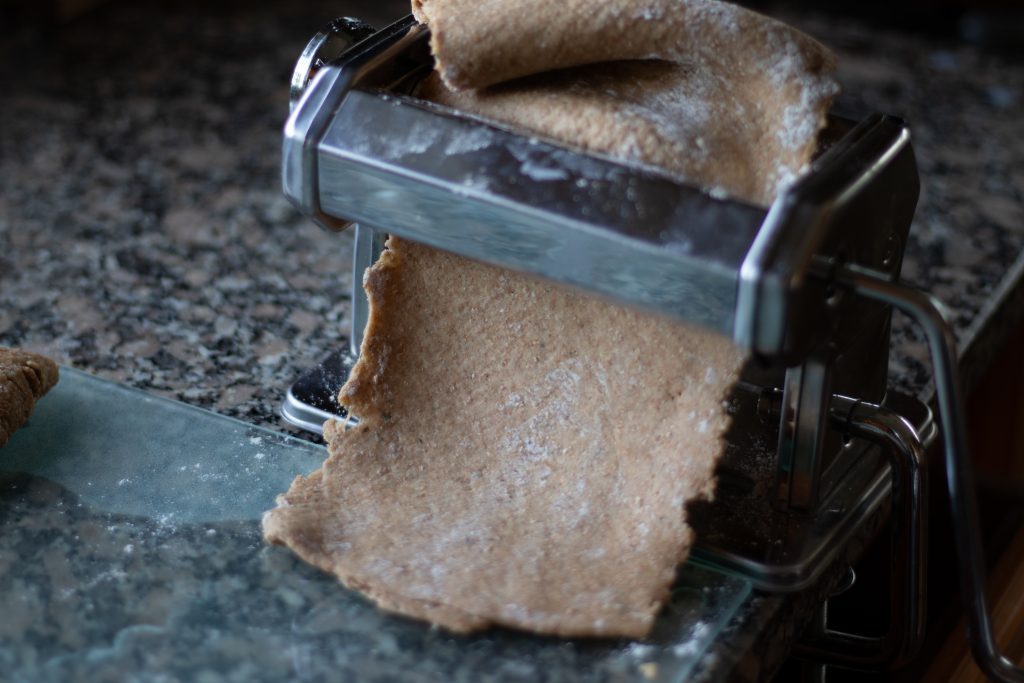
Attach the spaghetti making attachment to the pasta machine and roll the pasta through to form spaghetti noodles, pulling it gently to keep it from clumping below the machine. Repeat with the other half of the dough.
STEP SEVEN – COOK THE SPAGHETTI
Fill a pot 2/3 of the way full with water and put it on a burner over high heat. Once it’s come to a boil, drop the spaghetti noodles into the water and let it cook until it rises to the surface; approximately 3-4 minutes.
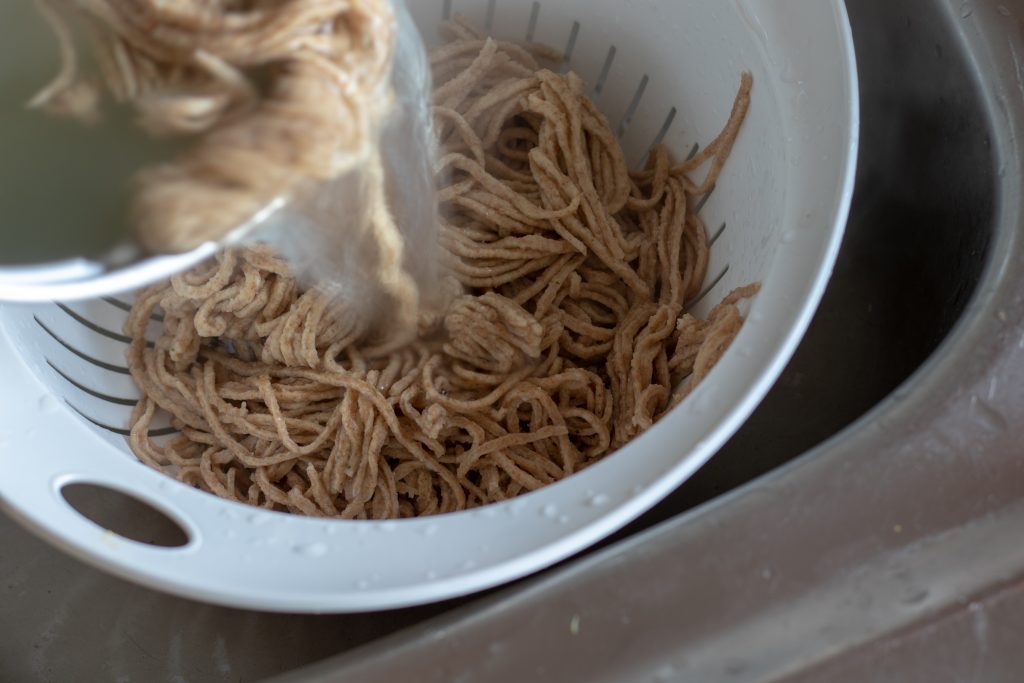
Drain the pasta of excess water by dumping it into a colander in the sink.
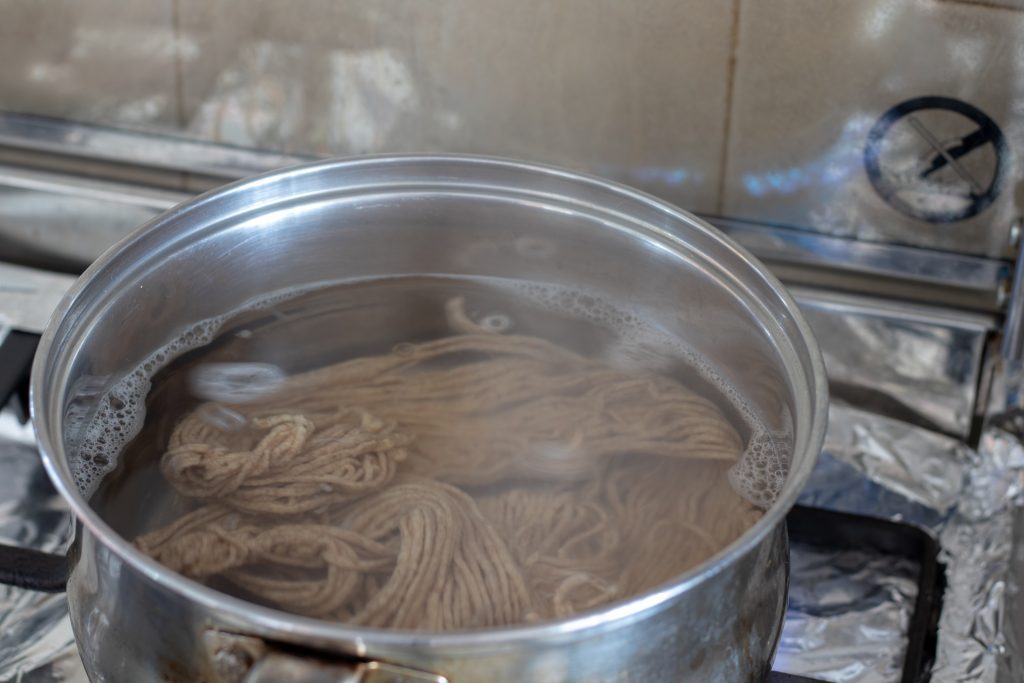
STEP EIGHT – PREPARE THE INGREDIENTS FOR THE SAUCE
Take the pumpkin out of the oven and allow it to cool just enough to touch it. While it cools, roughly chop the onion and smash the garlic with the side of the blade of a chef’s knife. They don’t need to be minced or finely chopped because the sauce will be blended to make it smooth.
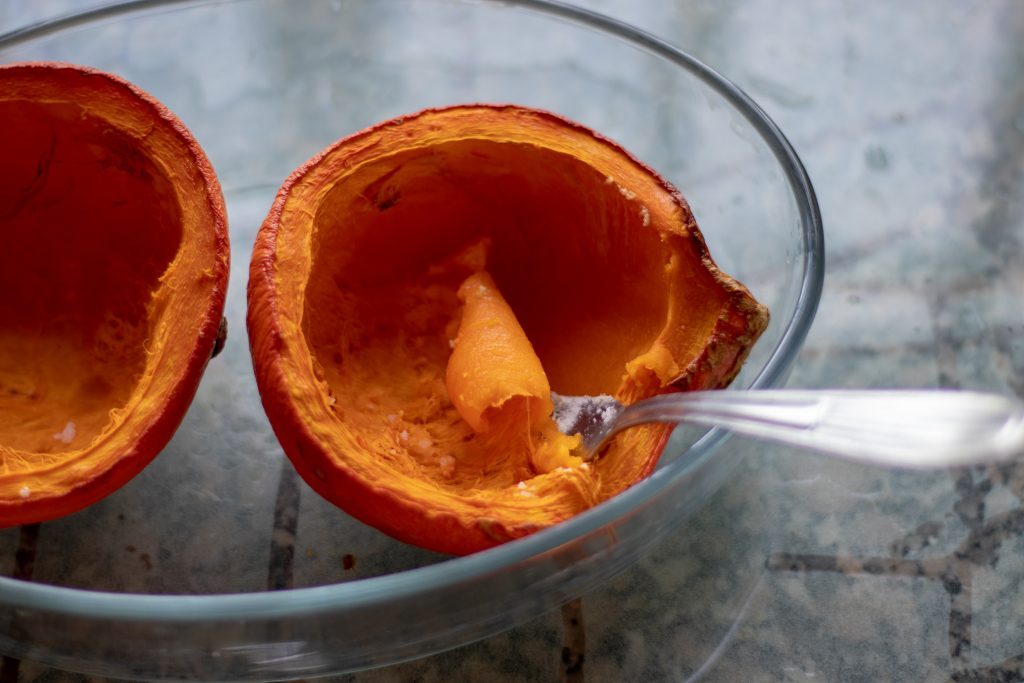
Once the pumpkin has cooled, take a fork and scrape the meat of the pumpkin from the skin. Put the pumpkin in a bowl and throw away the skin.
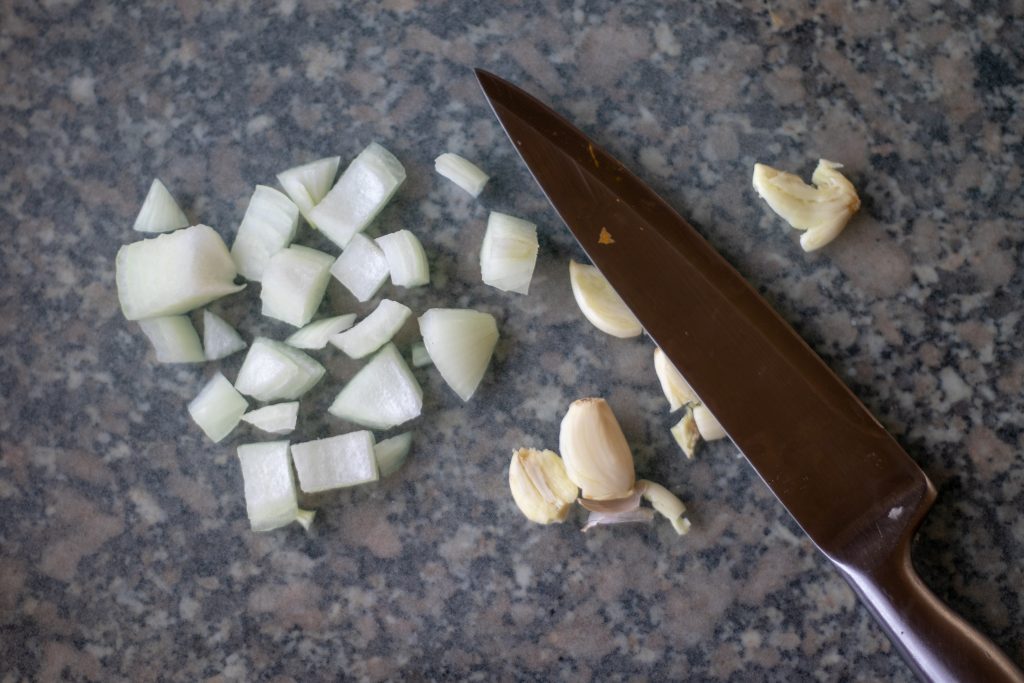
STEP NINE – MAKE THE SAUCE
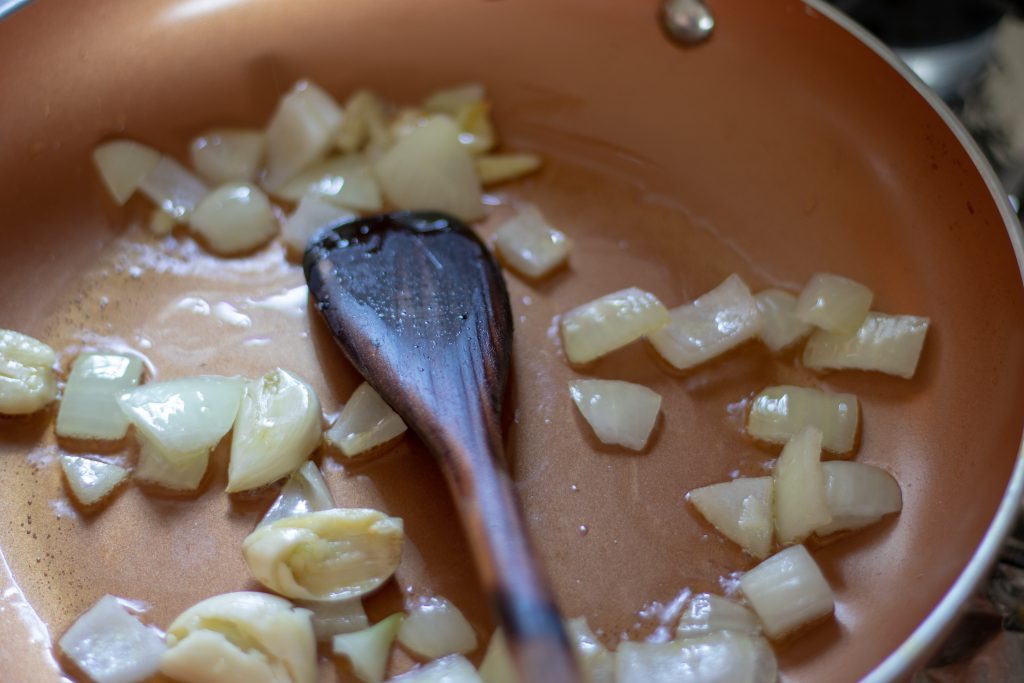
In a sauté pan on the stove top, heat the olive oil over medium-high heat. Once it’s hot, add in the onion and garlic and let it cook about 3 minutes or until they are soft and just beginning to turn brown.
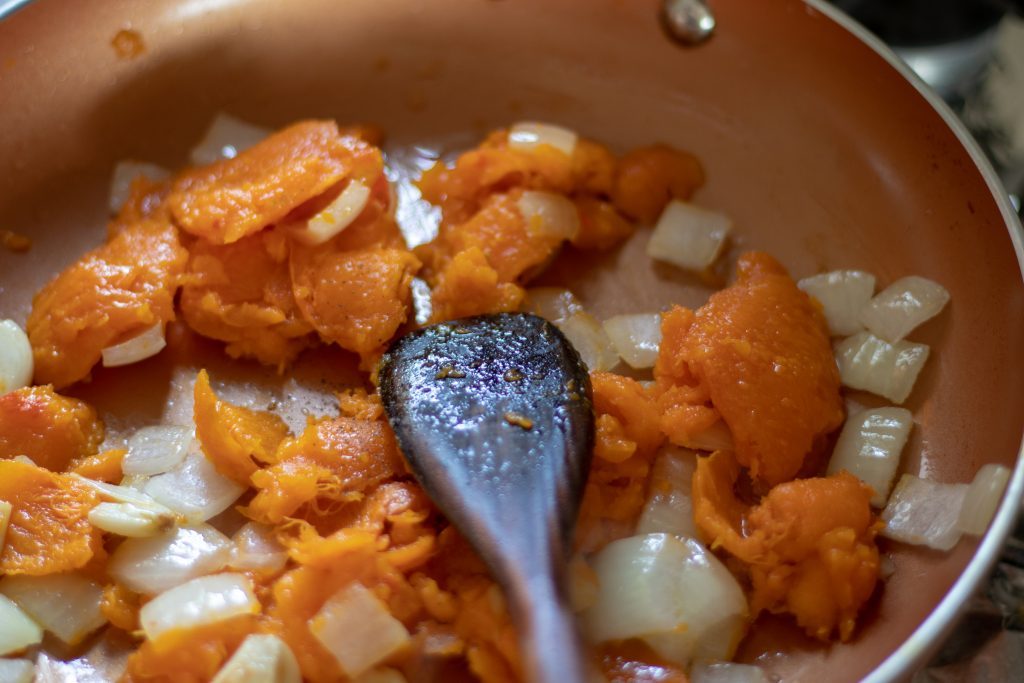
Toss the pumpkin into the pan and let it cook 5-7 minutes or until it’s become soft and paste-like. Be sure to stir often so that it doesn’t stick to the pan.
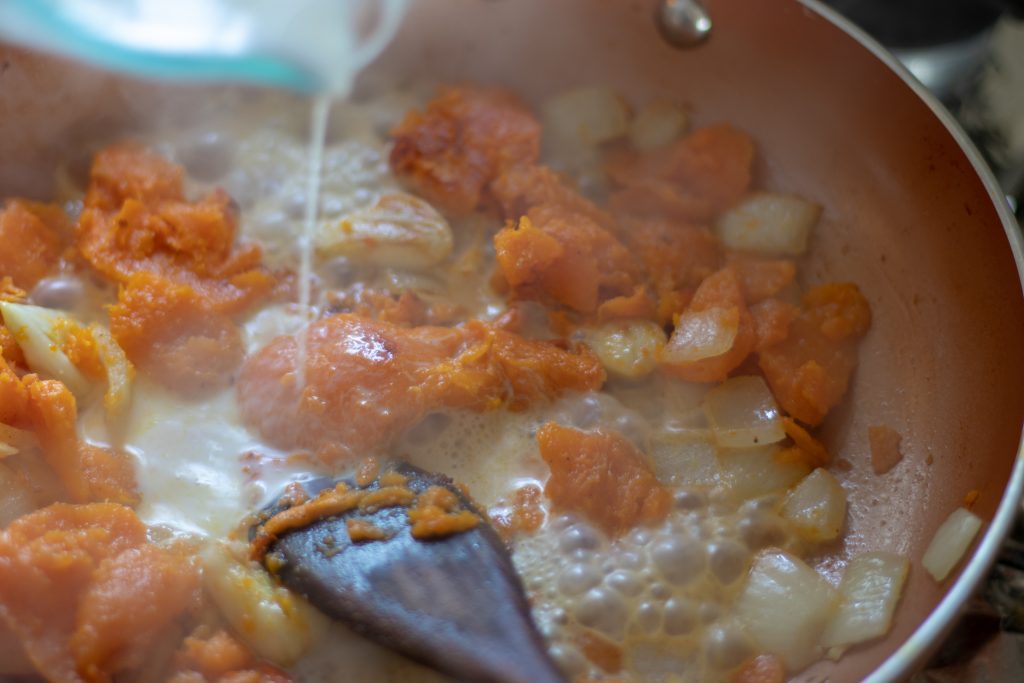
Pour the milk into the pan while stirring to combine. Just as it comes to a simmer, reduce the heat to medium-low and allow it to cook about 15 minutes making sure to stir every so often to make sure nothing burns.
STEP TEN – BLEND THE SAUCE
Turn off the burner and pour the sauce into a food processor or blender.
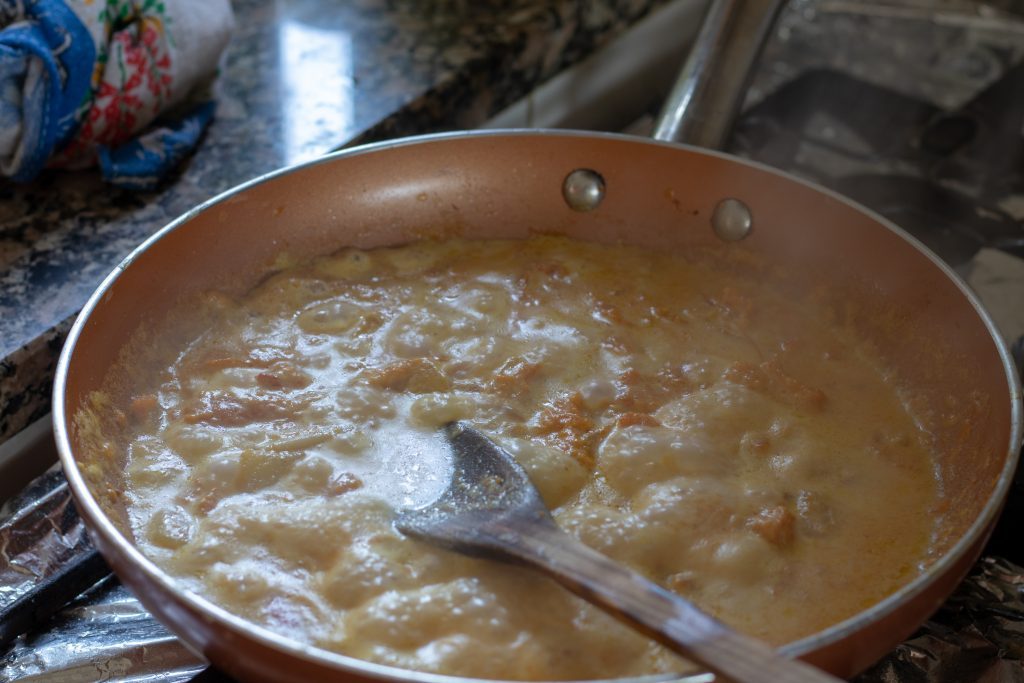
Blend it until it’s smooth and creamy consistency before pouring it back into the sauté pan.
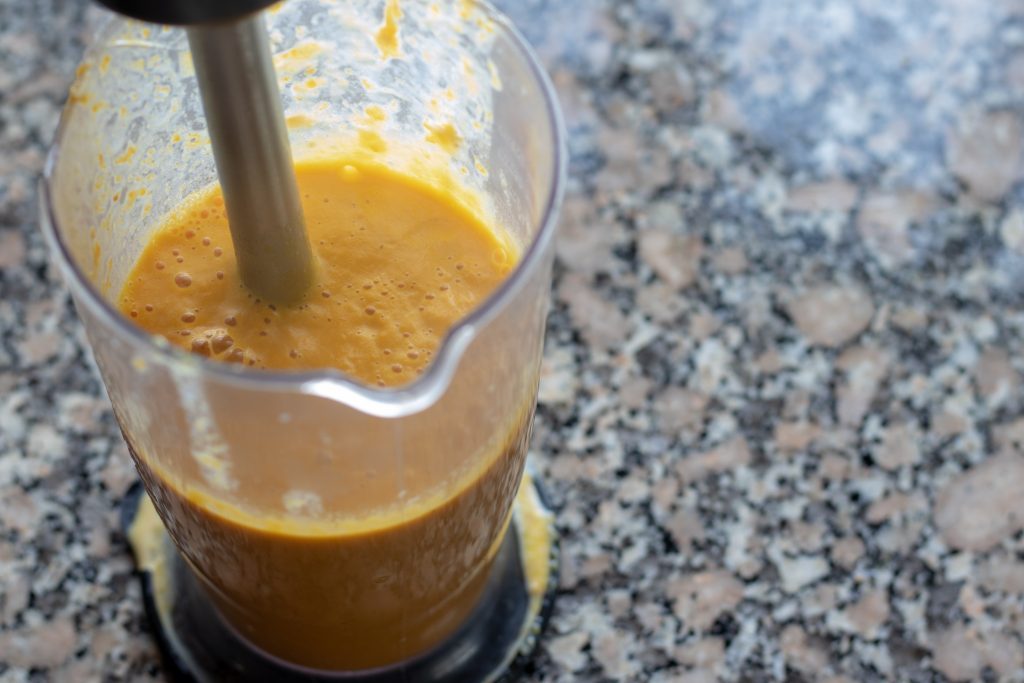
STEP ELEVEN – ADD SPAGHETTI TO SAUCE
Add the drained spaghetti noodles to the pan and toss it in the sauce with a pair of tongs. Make certain that all the pasta is coated with the pumpkin sauce, season with salt and black pepper before covering it with a lid.
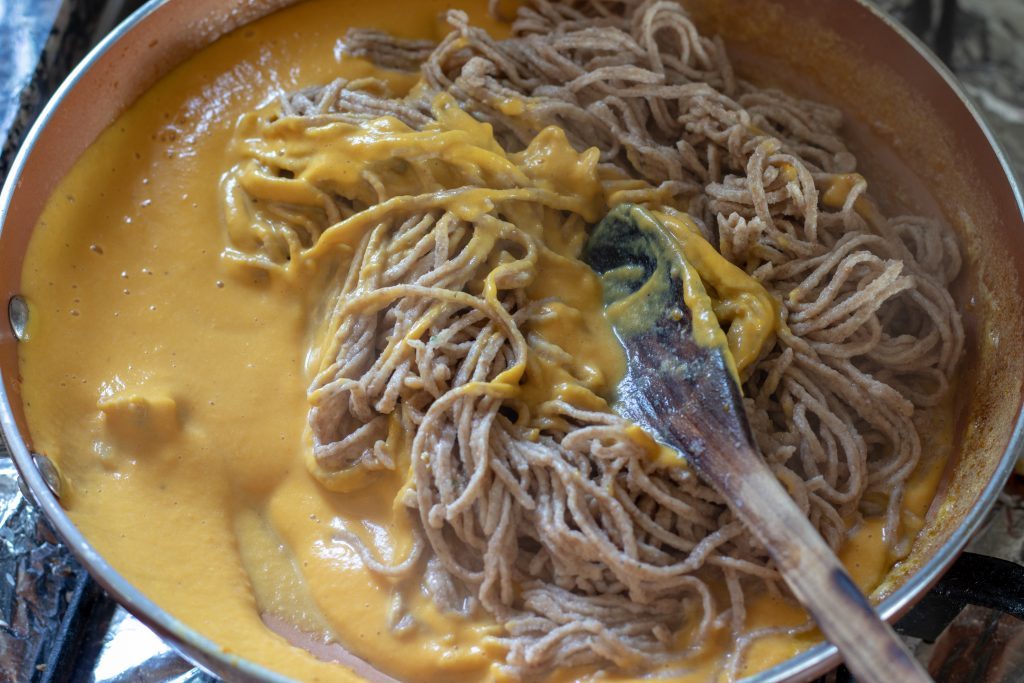
STEP TWELVE – CRISP THE PRESUNTO
Place a clean pan on the stove top over medium heat. Lay the pieces of presunto in the pan in a single layer and let them cook until crispy.
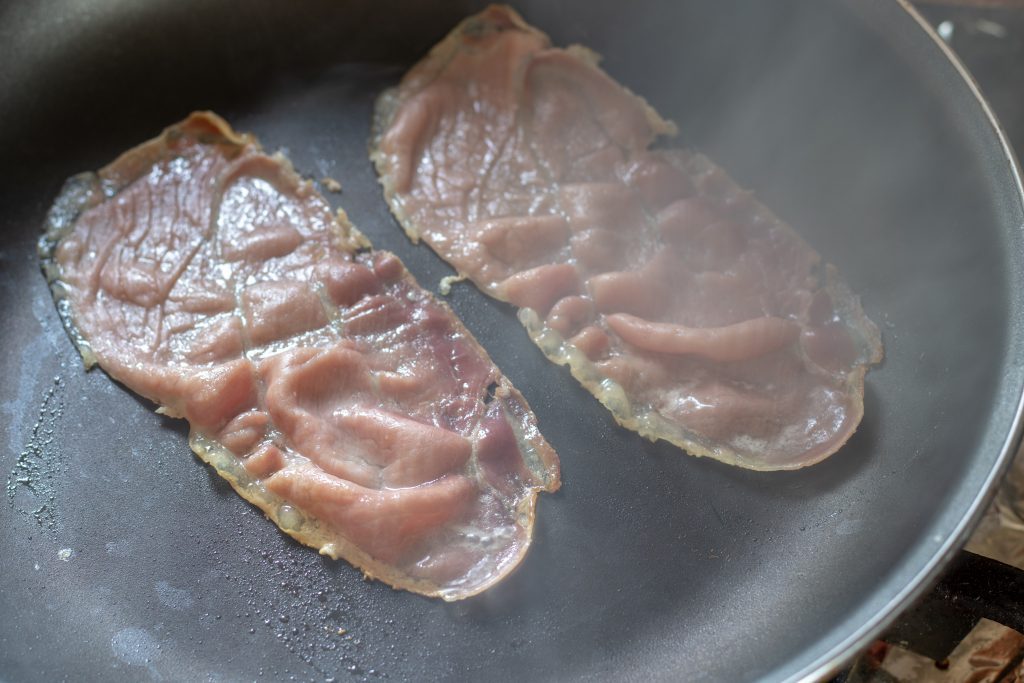
Transfer the presunto to a paper towel and dab them with another one to remove any excess oil.
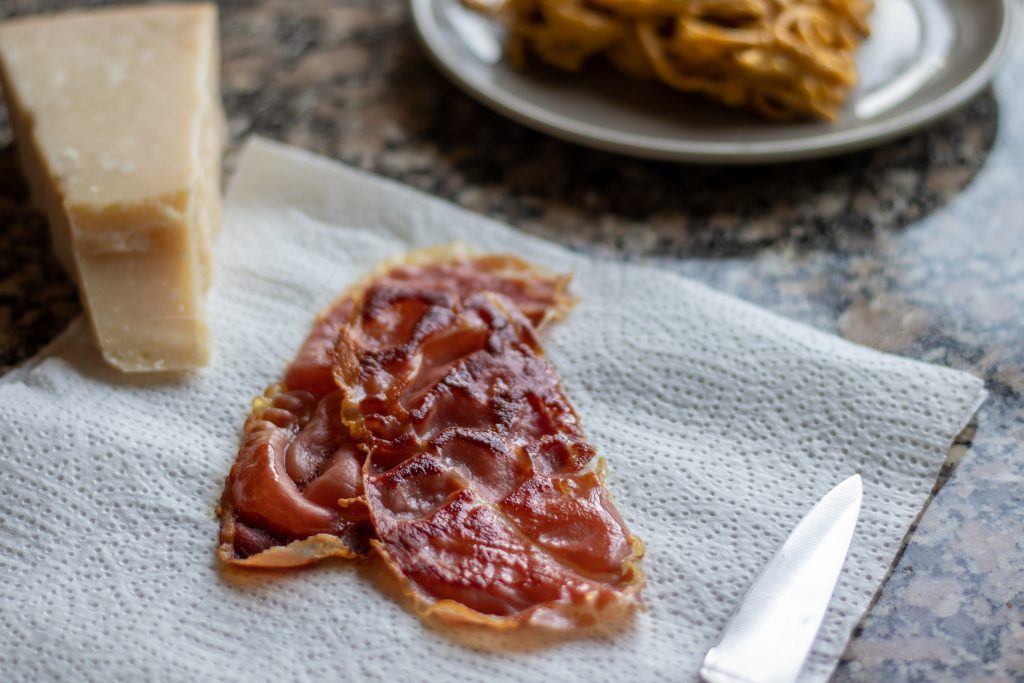
STEP THIRTEEN – PLATE THE SPAGHETTI
Put the spaghetti on a plate and crumble the
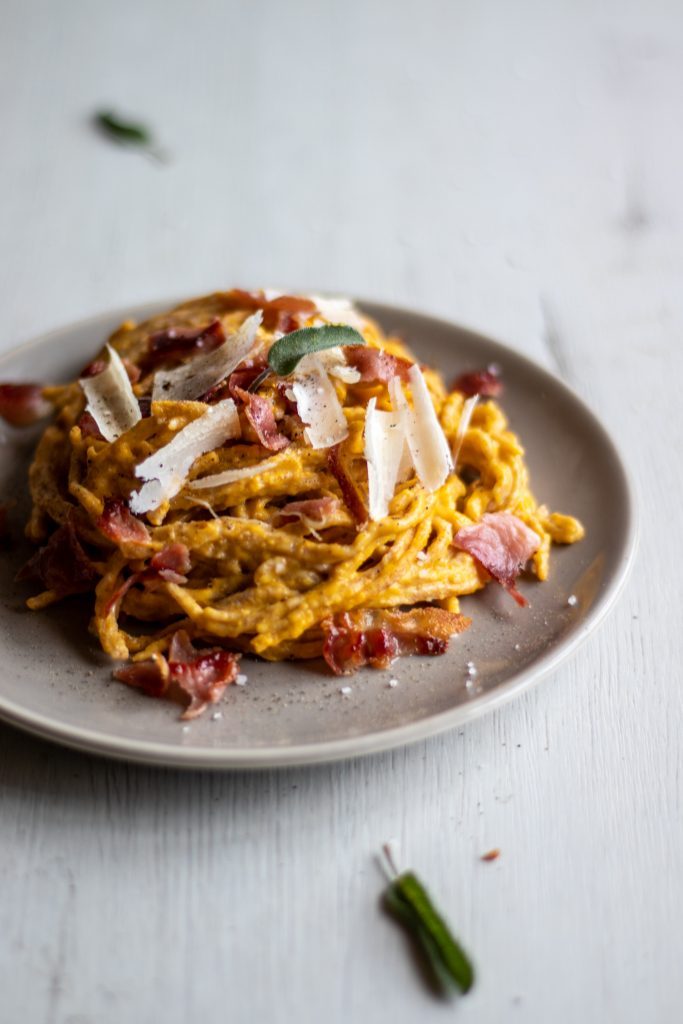
Spaghetti is a wonderfully versatile food. It can be made in countless ways from scratch be it based on flour type, vegetables and fruits added to make a rainbow of color, or just some simple herbaceous flavor!
What is your favorite way to have spaghetti? Do you enjoy rolling out your own dough? If so, what is the favorite in your house and what sauce or seasonings do you pair it with?
Thank you Jennifer – we absolutely love this recipe.
Find more on her blog: Jens Reviews
 Food
Food Farmers
Farmers Sustainable Living
Sustainable Living Living Planet
Living Planet News
News